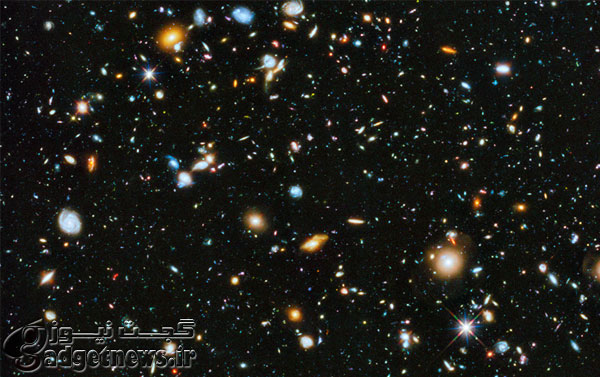
تصاویر کهکشانها و ستارههایی در دور دست همیشه ما را به داشتن احساسی شگفت انگیز و فارغ شده از تمام دنیای اطرافمان فرا میخوانند. آنها میخواهند به یاد آوریم در جهانی زیبا و شگفت انگیز زندگی میکنیم که هیچ پایانی برایش قابل تصور نیست.
ناسا با تلسکوپ قدرتمند هابل تا کنون صحنههایی خارقالعاده از جهان هستی کشف کرده که تا کنون دیده هیچ بشری به آنها نیافتاده است. برای ده سال گذشته این تلسکوپ در حال عکس برداری از اعماق فضا است و نمایش خیره کننده ستارهها و کهکشانهایی که بسیار دور از دسترس ما هستند را نشان میدهد.
امروز ناسا رنگیترین تصویری که تا کنون از فضا و توسط هابل گرفته شده را منتشر کرده است. این تصویر واقعا فوقالعاده انسان را وادار به خیره شدن میکند. به گفته ناسا این تصویر عمیقترین و رنگیترین تصویری است که توسط هابل تاکنون از اعماق فضا گرفته شده است.
شبیه به دیگر تصاویری که از عمق فضا به ثبت رسیده، این تصویر نیز حاصل ترکیب عکسهای ضبط شده از سال 2003 تا 2012 است.
تصاویری بدین شکل به منظور مطالعه بر روی نحوه تولید و عمر ستارگان مورد استفاده قرار میگیرد که توسط قابلیت نزدیک به مادون قرمز تلسکوپ هابل ضبط شده است. این تصاویر برخوردار از اهمیت بالایی برای برنامههای ناسا و تلسکوپ فضایی دیگر James Webb هستند.
منبع : engadget
Want to feel amazed, isolated and inspired all a the same time? Look to the stars. Form here on Earth, space seems like and endless empty void — but anybody familiar with NASA’s Hubble Space Telescope know things look a bit more lively from orbit. For the last decade, the orbiting machinery has been snapping photos of deep space, giving us stunning views of stars and galaxies far beyond our reach. This week NASA released the telescope’s most recent composite image: the Hubble Ultra Deep Field 2014 (pictured above). It’s gorgeous, stunning and a tad overwhelming. NASA says it’s also made up of the most colorful deep space images ever captured.
Like the deep field images before it, this latest picture is actually a composite of shots taken from 2003 through 2012 (previous composites ended at 2009). These images were used to study star birth in deep space, filtered through Hubble’s near-infrared capabilities. Still, researchers wanted more, and have imbued the telescope’s latest imagery with ultraviolet light data, creating the vibrant display of stars you see above. It’s more than just a gorgeous view, however — images like are important to NASA’s plans for the James Webb Space Telescope, Hubble’s successor. Hungry for more details? Check out the full resolution image at Hubblesite at the source link below, or check out the underlying video.
 گجت نیوز آخرین اخبار تکنولوژی، علم و خودرو
گجت نیوز آخرین اخبار تکنولوژی، علم و خودرو 





